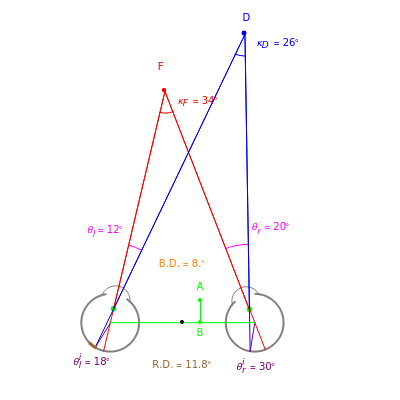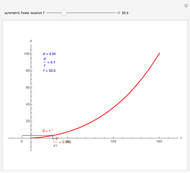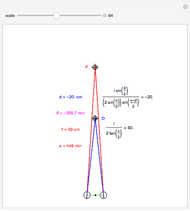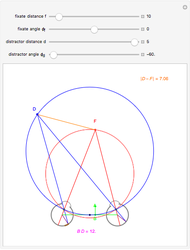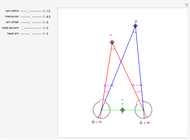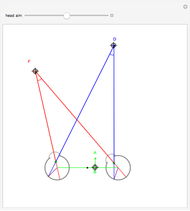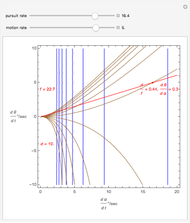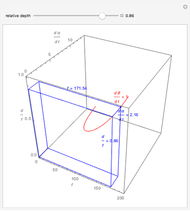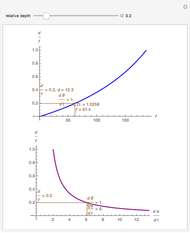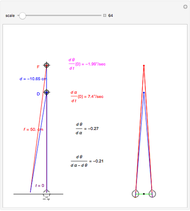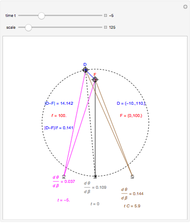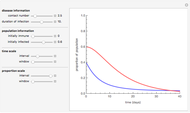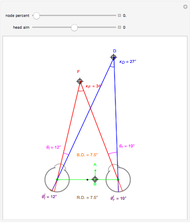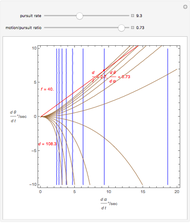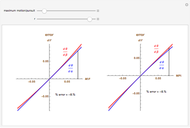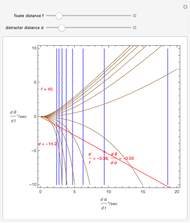Binocular Disparity (Visual Depth Perception 7)

Requires a Wolfram Notebook System
Interact on desktop, mobile and cloud with the free Wolfram Player or other Wolfram Language products.
This Demonstration shows binocular and retinal disparity. Since our eyes are separated, they receive slightly different images, a "disparity". Mathematically, binocular disparity is the difference between the "convergence angles"  . Binocular disparity is shown in degrees in orange. The scale is very small to exaggerate the angles in order to see what they measure at normal viewing distances.
. Binocular disparity is shown in degrees in orange. The scale is very small to exaggerate the angles in order to see what they measure at normal viewing distances.
Contributed by: Keith Stroyan (March 2011)
Open content licensed under CC BY-NC-SA
Snapshots
Details
Binocular disparity has been studied since Euclid, but was popularized by Wheatstone about 150 years ago with the invention of the "stereoscope".
Binocular disparity is constant on circles through the node points of the eyes, as we show in the Demonstration "Vieth–Müller Circles (Visual Depth Perception 8)" (see Related Links). The connection between depth and disparity is shown in the Demonstrations "Disparity, Convergence and Depth (Visual Depth Perception 10)" and "Binocular Disparity versus Depth (Visual Depth Perception 9)" (see Related Links).
For more information on stereoscopic vision see the Wikipedia page and the introduction in the Demonstration "Motion/Pursuit Law in 1D (Visual Depth Perception 1)" (see Related Links).
Permanent Citation
